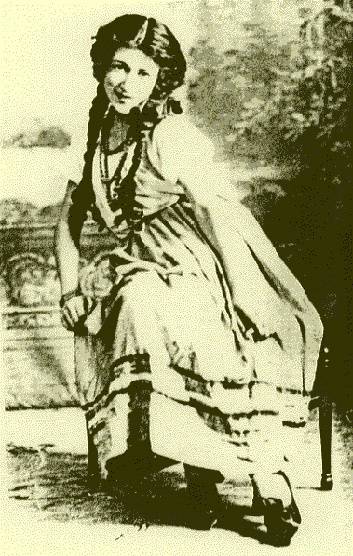Yiddish Culture in San Francisco: Difference between revisions
m (fixed links) |
(PC) |
||
| (3 intermediate revisions by 2 users not shown) | |||
| Line 1: | Line 1: | ||
'''<font face = Papyrus> <font color = maroon> <font size = 4>Historical Essay</font></font> </font>''' | |||
''by Dina Kraft'' | |||
[[Image:jewishsf$bassya.jpg]] | [[Image:jewishsf$bassya.jpg]] | ||
| Line 7: | Line 11: | ||
--from a 1929 pamphlet on the Yiddish folk school | --from a 1929 pamphlet on the Yiddish folk school | ||
The Eastern European Jews that arrived in San Francisco during the early part of first half of the 20th century found an assimilated "Americanized" Jewish community. In an attempt to infuse their lives with a sense of authentic Jewish culture, young Eastern European Jewish immigrants organized the Jewish Folk Shule (school) in 1922. The school became the central hub of Yiddish culture in the city featuring a literary dramatic club, a socialist workman's circle (Arbeiter Ring), Zionist gatherings, classes for adults, literary and musical evenings, and lectures. | The Eastern European Jews that arrived in San Francisco during the early part of first half of the 20th century found an assimilated "Americanized" Jewish community. In an attempt to infuse their lives with a sense of authentic Jewish culture, young Eastern European Jewish immigrants organized the Jewish Folk Shule (school) in 1922. The school became the central hub of Yiddish culture in the city featuring a literary dramatic club, a socialist workman's circle (''Arbeiter Ring''), Zionist gatherings, classes for adults, literary and musical evenings, and lectures. | ||
School member Philip Bibiel writes of the organization in 1929, "...through friendship and conviction (the school) converts the assimilated, almost gentile, contemptuous San Francisco, into a city where Yiddish is blossoming, a place where Yiddish receives "recognition." The Jewish San Francisco will become for the western part of America, in the future, what New York is for the eastern part now." | School member Philip Bibiel writes of the organization in 1929, "...through friendship and conviction (the school) converts the assimilated, almost gentile, contemptuous San Francisco, into a city where Yiddish is blossoming, a place where Yiddish receives "recognition." The Jewish San Francisco will become for the western part of America, in the future, what New York is for the eastern part now." | ||
[[Levi Strauss |Prev. Document]] [[Gerstle Family |Next Document]] | |||
[[ | [[category:Jewish]] [[category:1920s]] | ||
Latest revision as of 23:26, 10 January 2009
Historical Essay
by Dina Kraft
Yiddish actress Bassya, poet, author, secretary, and actress, from Bessarabia. Arrived in San Francisco in 1921.
"Once again in a rainy winter evening, a few young men sitting around over a hot glass of tea were thinking ways to reawaken the cold and indifferent Jewry of the city. They came to the conclusion that only through Yiddish Theater would it be possible to reach their hearts and plant a longing for the Yiddish word."
--from a 1929 pamphlet on the Yiddish folk school
The Eastern European Jews that arrived in San Francisco during the early part of first half of the 20th century found an assimilated "Americanized" Jewish community. In an attempt to infuse their lives with a sense of authentic Jewish culture, young Eastern European Jewish immigrants organized the Jewish Folk Shule (school) in 1922. The school became the central hub of Yiddish culture in the city featuring a literary dramatic club, a socialist workman's circle (Arbeiter Ring), Zionist gatherings, classes for adults, literary and musical evenings, and lectures.
School member Philip Bibiel writes of the organization in 1929, "...through friendship and conviction (the school) converts the assimilated, almost gentile, contemptuous San Francisco, into a city where Yiddish is blossoming, a place where Yiddish receives "recognition." The Jewish San Francisco will become for the western part of America, in the future, what New York is for the eastern part now."

